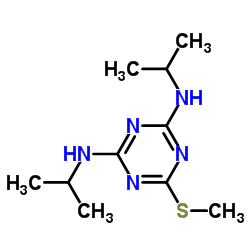Combined effects of bacterial-feeding nematodes and prometryne on the soil microbial activity.
Jihai Zhou, Xuechao Li, Ying Jiang, Yue Wu, Jiandong Chen, Feng Hu, Huixin Li
Index: J. Hazard. Mater. 192(3) , 1243-9, (2011)
Full Text: HTML
Abstract
Microcosm experiments were carried out to study the effects of bacterial-feeding nematodes and indigenous microbes and their interactions on the degradation of prometryne and soil microbial activity in contaminated soil. The results showed that soil indigenous microbes could degrade prometryne up to 59.6-67.9%; bacterial-feeding nematodes accelerated the degradation of prometryne in contaminated soil, and prometryne degradation was raised by 8.36-10.69%. Soil microbial biomass C (C(mic)), basal soil respiration (BSR), and respiratory quotient (qCO(2)) increased in the beginning of the experiment and decreased in the later stage of the experiment. Nematodes grew and reproduced quite fast, and did increase the growth of soil microbes and enhance soil microbial activity in prometryne contaminated soil during the incubation period.Copyright © 2011 Elsevier B.V. All rights reserved.
Related Compounds
| Structure | Name/CAS No. | Molecular Formula | Articles |
|---|---|---|---|
 |
Prometryn
CAS:7287-19-6 |
C10H19N5S |
|
Assessing the potential for algae and macrophytes to degrade...
2011-03-01 [Environ. Toxicol. Chem. 30(3) , 622-31, (2011)] |
|
Effect of chronic exposure to prometryne on oxidative stress...
2012-01-01 [Neuro Endocrinol. Lett. 33 Suppl 3 , 130-5, (2012)] |
|
Quantitative analysis of triazine herbicides in environmenta...
2010-09-23 [Anal. Chim. Acta 678(1) , 26-33, (2010)] |
|
Brain toxicokinetics of prometryne in mice.
2010-03-01 [Arh. Hig. Rada Toksikol. 61(1) , 19-27, (2010)] |
|
Fluorescence and electrochemical sensing of pesticides metho...
2012-03-01 [J. Fluoresc. 22(2) , 659-76, (2012)] |